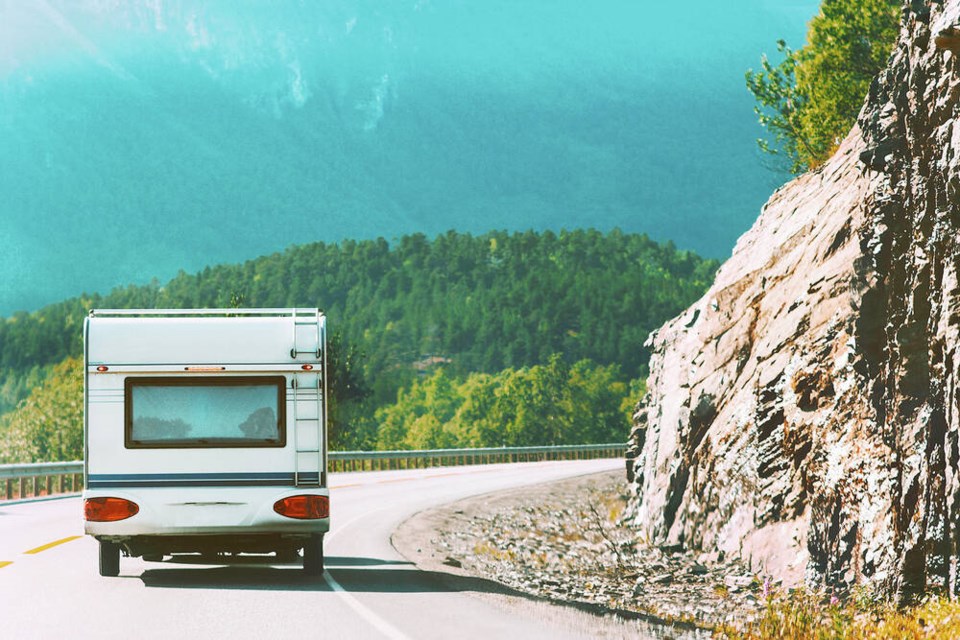I’m still having trouble moving on from a stat that occurred this summer. This past July, 51 people were killed on ÎÚÑ»´«Ã½ roads — one of the worst months in our history — including 25 deaths in 10 days between July 5 and July 15, according to BC Emergency Health Services.
Two families were killed within 24 hours in separate crashes in Agassiz and Keremeos. Appalling is the only word I can come up with.
Theoretically, it’s the best time of year for driving conditions in this province. Conditions are mostly clear and dry with good visibility.
Yet, it remains one of the deadliest periods to drive throughout the year.
In looking for answers around this gruesome problem, I continually found references about how safe it is to drive in Norway, which is near the top of the peak for safest countries to drive in throughout the planet.
Norway is just slightly edged out by the Netherlands, which attributes much of its road safety to an absence of cars and a predominance of cycling.
But I feel Norway is a better comparison because of our similar geographies and its bigger land size.
According to the European Transport Safety Council’s Safety Performance Index, Norway averages 1.5 road fatalities per 100,000 people. In ÎÚÑ»´«Ã½, the number is 4.7. That’s over 3 times the difference. While that’s considerable, the U.S. had a road death rate of 13.8 per 100,000 people in 2022.
So what goes on in Norway to make their road safety so much better?
First of all, Norway’s road safety reputation precedes it, meaning that it is known for its strict driving rules and enforcement.
Generally the speed limit is 50 km/h in urban areas, 80 km/h on rural roadways and 110 km/h on motorways. Seems very reasonable to me. But speed camera enforcement is common and studies have repeatedly shown that these conservative speed limits have a direct correlation to reducing fatalities.
So, doing 5 km/h over the limit in Norway can land you a $150 fine, while 10km/h over you’d be looking at just over 400 bucks. If you’re crazy enough to get up to 25 km/h over the limit you’ll pay about $1,650. Speeds over 40 km/h above the limit can land you in jail.
What I also found interesting was their strict reinforcement of the concept that you always give way to vehicles approaching from the right. Analysts there believe that is a large factor in greatly reducing all types of collisions. Unless indicated otherwise, “yielding to the right” is common practice, which is drilled into drivers from day one.
The impaired driving limit in Norway is 0.02, one of the lowest limits in the western world. Police road checks are conducted frequently and mandatory breath samples are required from any driver even if they believe you’re under the limit.
Perhaps most importantly is their cultural stigma attached to drunk and reckless driving. It’s simply not on. Bad driving is taken seriously. Norway was the first country on Earth to set a legal limit for drunk driving — back in 1936.
Fines for bad driving in Norway are also means-tested based on both yearly income and/or total personal assets. A good example of this happened in 2009 when a businessman whose wealth was estimated at $30 million was fined $109,000 for being “well over the limit.”
This community attitude coupled with a legal limit of 0.02, which really amounts to a zero level in practical terms, says that their society takes the issue much more seriously than we do. The statistical results in death prevention speak for themselves.
We do have tough driving laws in this province yet Norway shows us we still have a ways to go if we want to prevent another July 2024 on our roads.
Glove Box: Did you know that 49% of drivers ignore the warning lights in their dashboard? Me neither. But according to a CarMD.com study nearly half of us on the road do just that. That number includes 20% of drivers who ignore the “Check Engine” sign. The problem is mainly attributed to the skyrocketing price in vehicle repairs coupled with the still tough economy, leaving less and less car repair money in people’s pockets. Trouble is, ignoring those lights can lead to even more costly repairs along with a reduction in fuel efficiency of up to 25% depending on the problem. And remember cars never break down just outside your house or in front of a repair shop. It always happens at the worst possible time and place in your day.



